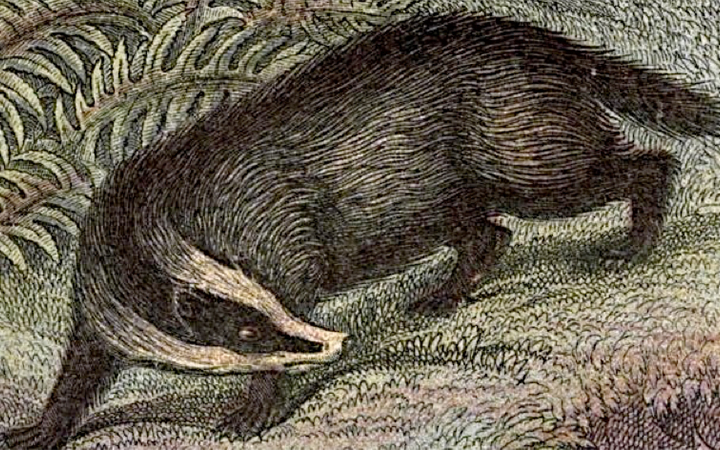The European badger (Meles meles) is a species of badger in the family Mustelidae and is native to almost all of Europe and some parts of the Middle East. Several subspecies are recognised; the nominate subspecies (Meles meles meles) predominates over most of Europe. The European badger is classified as being of Least Concern by the IUCN as it has a wide range and a large population size which is stable, and even increasing in some areas.
The European badger is a powerfully built black, white and grey animal with a small head, a stocky body and short tail. Its weight varies, being 7–13 kg (15–29 lb) in spring but building up to 15–17 kg (33–37 lb) in autumn before the winter sleep period. It is nocturnal and is a social, burrowing animal that sleeps during the day in one of several setts in its territorial range. These burrows, which may house several badger families, have extensive systems of underground passages and chambers and have multiple entrances. Some setts have been in use for decades. Badgers are very fussy over the cleanliness of their burrow, carrying in fresh bedding and removing soiled material, and they defecate in latrines strategically situated around their territory.
Though classified as a carnivore, the European badger feeds on a wide variety of plant and animal foods. The diet consists mainly of earthworms, large insects, small mammals, carrion, cereals and root tubers. Litters of up to five cubs are produced in spring. The young are weaned a few months later but usually remain within the family group. The European badger is generally a peaceful animal, having been known to share its burrow with other species such as rabbits, red foxes and raccoon dogs, but it can be ferocious when provoked, a trait which has been exploited in the now illegal blood sport of badger-baiting. The spread of bovine tuberculosis has been attributed to badgers, however recent peer reviewed reports state that the issue is more to do with cattle management.
(From Wikipedia, March 2015)




